21 amazing Souvenirs from Provence
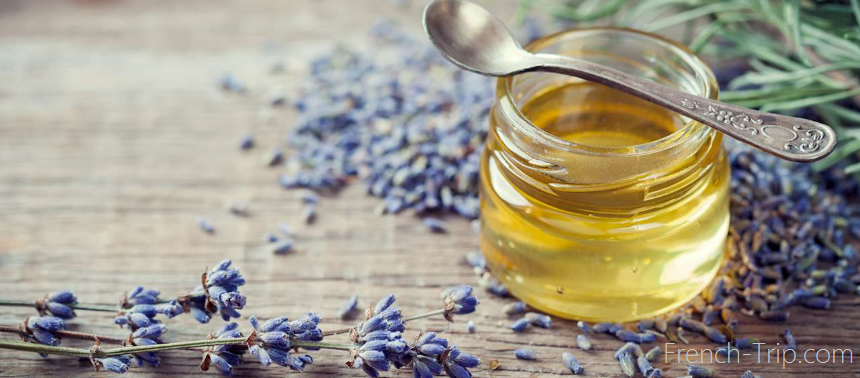
Provence offers a delightful array of souvenirs that capture the essence of the region’s culture, cuisine, and natural beauty. It is better to explore local markets, boutiques, and artisan workshops to discover unique and authentic souvenirs that will remind you of your visit to the beautiful region of Provence.
More information:
Here are some popular souvenirs you can buy in Provence:
Souvenirs from Provence
1. Lavender Products
Provence is famous for its lavender fields, and you can find an array of lavender-based souvenirs, including sachets, essential oils, soaps, and dried lavender bundles.
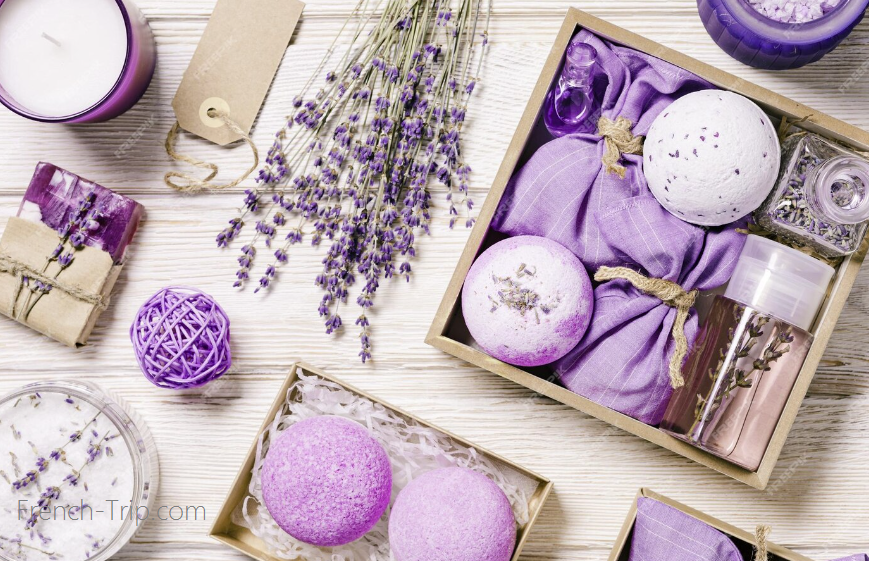
2. Provençal Fabrics
Textiles with traditional Provençal designs, such as “Pierre Deux” or “Pays d’Arles” patterns, are a classic choice. Look for tablecloths, napkins, aprons, and tea towels in these vibrant colors.
Provençal fabrics feature a characteristic pattern: most often, they have contrasting yellow-red or yellow-blue colors, or soft pastel shades, in polka dots or with traditional prints, made from cotton and linen. Floral motifs are commonly used for prints, with lavender images being quite frequent.
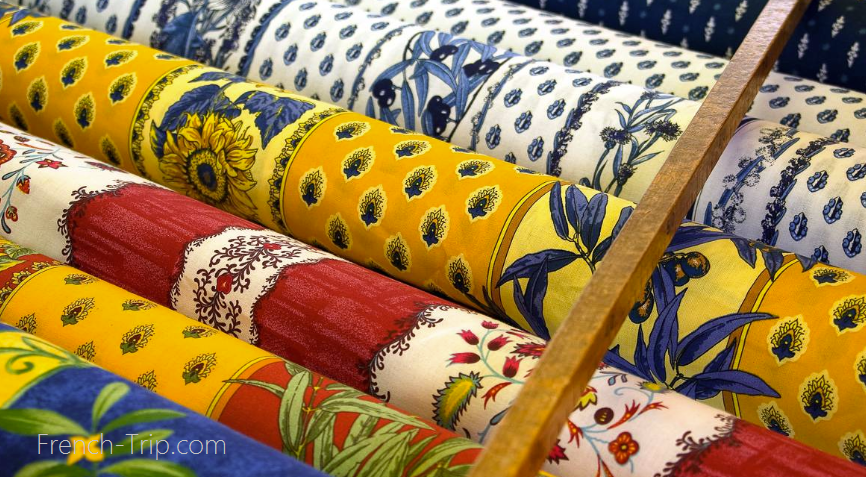
3. Ceramics
Provence is home to skilled potters and ceramic artists. Handcrafted pottery, tableware, tiles, and decorative items in colorful Provençal patterns are popular souvenirs. Simple, as is typical of rural products, but very optimistic, it will brighten up even gloomy winter days, reminding you of sunny days in France.
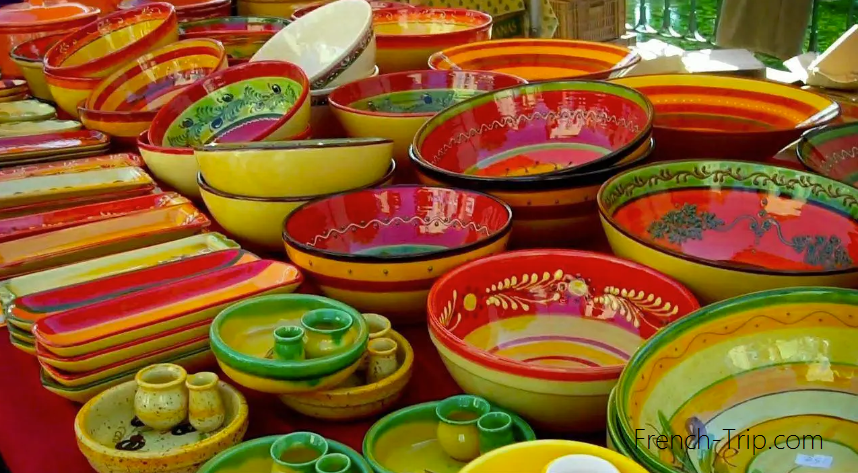
4. Herbs and Spices
Provence is known for its aromatic herbs and spices. You can purchase bundles of fragrant herbs like thyme, rosemary, and lavender, as well as Provençal spice blends.
Provençal herbs (Herbes de Provence) are usually sold in small burlap bags. The price depends on the size of the bag: a small bag costs around 2 €. By the way, if you want to save some money, it’s worth checking out the U supermarkets – in some of them, similar bags are sold cheaper: 1.25 € for a small one and 2.5 €for a large one.
Make sure there’s a yellow label (that company is definitely Provençal, not from China or Turkey). These spices will make for an ideal and budget-friendly gift that won’t just collect dust in a cupboard but will be put to good use in the kitchen.
You can buy spices not only in bags but also in characteristic mills decorated with cheerful patterns. Sets of three different mills are also available, but they are, of course, a bit more expensive, starting from 5 €each.
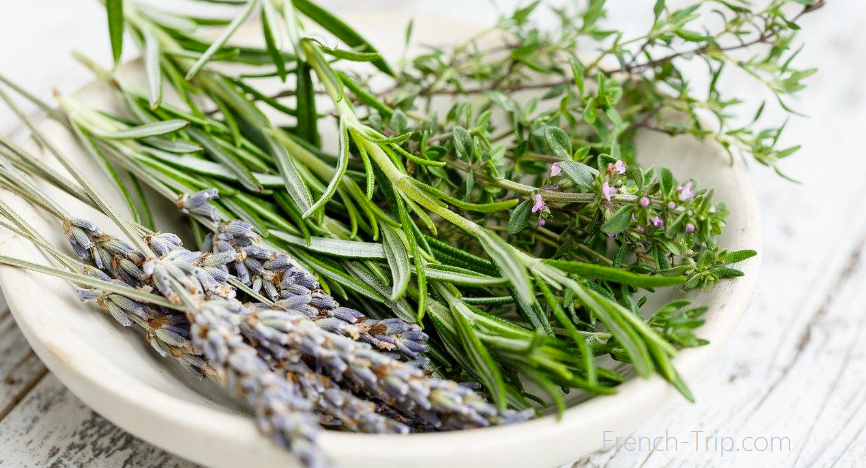
5. Olive Oil and Olives
The region’s olive groves produce high-quality olive oils and a variety of olives. You can bring home bottles of extra virgin olive oil and jars of marinated olives.
Olive oil is one of the main products produced in Provence. Neat rows of olive trees can be found everywhere. Olives are consumed in the form of paste (tapenade), brined and marinated, served as appetizers, added to salads (like Niçoise), used to make oil (which is marked with a quality label), and utilized in cosmetics.
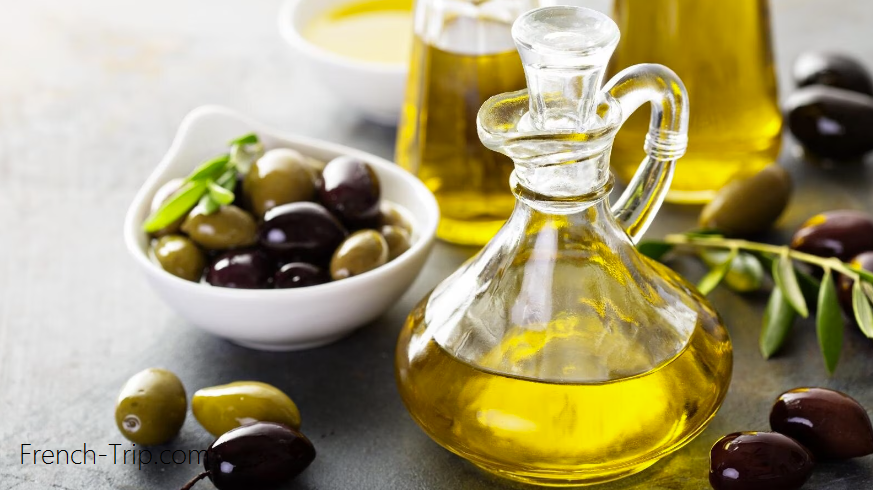
6. Provençal Soaps
Provençal soaps, particularly Marseille soap, are highly regarded for their quality and natural ingredients. Look for artisanal soaps in various scents and shapes.
Marseille soap, also known as Savon de Marseille, is a traditional soap that originated in the French city of Marseille. It is renowned for its high quality and purity. Here’s how Marseille soap is typically made and what sets it apart from other soaps:
- Ingredients: Marseille soap is made using only a few simple, natural ingredients, including olive oil, water, and soda ash (sodium carbonate). Traditional Marseille soap is often made with at least 72% olive oil, although there are variations that use other vegetable oils like palm or coconut.
- Cooking Process: The soap-making process is a slow and traditional one. The ingredients are mixed and then heated in large cauldrons for several days. This prolonged cooking process is one of the key factors that distinguish Marseille soap from other soaps. It allows for complete saponification (the chemical reaction that turns fats and oils into soap) and ensures the soap’s purity.
- Drying and Cutting: After the soap mixture has cooked and thickened, it is poured into molds and left to cool and solidify. Once solidified, the soap is removed from the molds, cut into bars or cubes, and stamped with the Marseille seal as a mark of authenticity.
- Curing: The cut soap bars are then left to cure for several weeks to several months. This curing process further hardens the soap and allows it to last longer when used.
What Sets Marseille Soap Apart:
- Natural Ingredients: Marseille soap contains minimal ingredients, all of which are natural and biodegradable. It is free from synthetic additives, fragrances, and dyes, making it a hypoallergenic and eco-friendly choice.
- Gentle on Skin: Marseille soap is known for its mildness and gentle cleansing properties. It is suitable for all skin types, including sensitive skin, and can be used on the face and body.
- Versatility: Marseille soap is a versatile product that can be used for various purposes. It can be used as a body soap, hand soap, laundry detergent, and even as a household cleaner.
- Long-Lasting: Due to its high concentration of oils and the curing process, Marseille soap is long-lasting and can outlast many commercially available soaps.
- Environmentally Friendly: Marseille soap is biodegradable and does not harm the environment. Its simple and natural composition makes it an eco-conscious choice.
Marseille soap has a long history dating back to the 9th century and continues to be cherished for its purity and versatility. When purchasing Marseille soap, look for authentic products with the “Savon de Marseille” seal to ensure its quality and origin.

7. Provençal wine and Local Spirits
Provence is a renowned wine region, and you can purchase bottles of local wines, especially rosé, as well as regional spirits like Pastis.
While Bordeaux remains the leader when it comes to red wines, Provence has become the king of exquisite rosé wines (pronounced “rose-ay”). Refreshing and crystal clear, it’s the perfect choice for hot summer days.
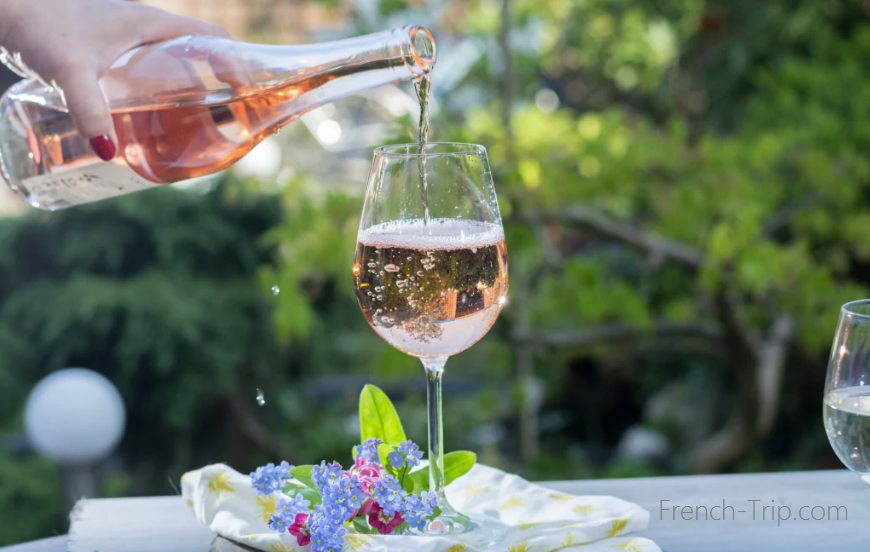
8. Tapenades
In Provence, especially in Nice, the so-called tapenades (French: la tapenade) are popular – thick pastes made from vegetables, olives, or capers that are spread on bread or toast and enjoyed as an appetizer or snack with wine. In Provencal markets, you can find tapenades made by artisans, in small quantities, and following traditional recipes. However, if you’re unsure, you can also find assortments of tapenades at “U” supermarkets, starting from 3.5 € per package. A small jar in a store costs from 3.5 €, at markets – from 4 € and above, but if you buy several at once, it will be cheaper.

9. Sausages
French people adore dried sausages, which are made from the meat of various animals, infused with their signature spices and fruits. You can find sausages made from duck, wild boar, venison, with figs, thyme, and many other varieties. Sausages come in different sizes and are usually sold individually. Paired with bread and a bottle of red wine, they make for a fantastic hearty dinner: nothing to add or remove! They also make great gifts for loved ones, as although they might smell of mold and cellar, it’s not as strong as some goat cheese, for example.
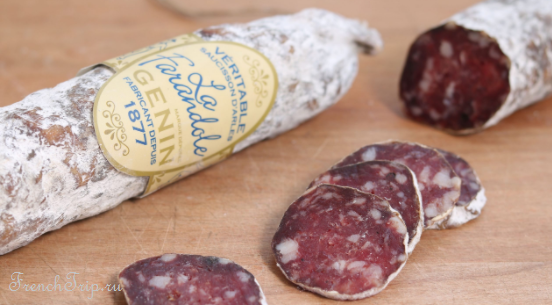
10. Lavender honey
If you find yourself in Provence, don’t miss the opportunity to try fragrant, translucent lavender honey (Miel de Lavande). Of course, in Provence, they make honey not only from lavender nectar, but it’s lavender honey that has a very distinctive aroma and is most strongly associated with the region. It comes in different colors; more often than not, you can find it dense and very light, with a creamy shade, but it can also be fresh and transparent with a golden hue. It’s best to look for lavender honey at Provencal markets rather than in stores, as this is where you can find the most fragrant varieties from artisans.

11. Cheese
French cheeses – they’re a must! In Provence, sheep’s cheese in various forms and varieties is especially popular. Prices can vary quite a bit. But be cautious with cheeses if you decide to take them home. They are quite aromatic and tend to permeate your suitcase in a rather overpowering manner. Soft cheeses also don’t keep for long, so it’s best to enjoy them as soon as possible, perhaps with a refreshing glass of Provençal rosé. The key is to choose the right cheese and wine pairing.
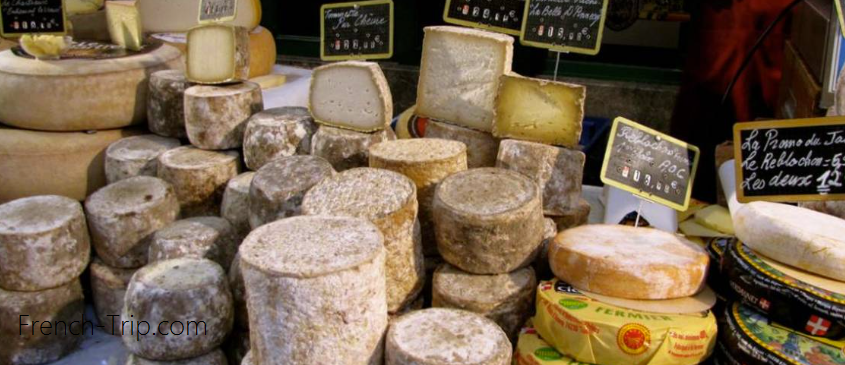
12. Terrines and Foie Gras
Terrines are a popular type of pâté in Provence, often with a coarse texture, containing pieces of meat and spices. And the most famous French pâté is foie gras: a delicate paste made from duck liver that melts in your mouth. Don’t expect to buy foie gras on the cheap side: even in mass production, a kilogram of foie gras usually costs no less than 45 euros. When made by artisans, it can easily cost 100 euros per kilogram, depending on the quality. Foie gras is typically packaged in thick glass jars with a rubber-sealed lid. Proper foie gras doesn’t have a long shelf life: about three weeks. In France, you can also find a simplified version, including in canned jars. However, the quality isn’t the same: it has a coarser taste and texture.
You can buy terrines in regular supermarkets, starting at around 10 euros per kilogram. There are also airtight packages that are convenient to take with you. But keep in mind that soft pâtés melt easily in the heat, so it’s better not to risk it in hot weather.

13. Nougat
The best nougat is made in Montélimar. Unlike the mass-market product found in regular stores, which is made from sugar and artificial colorings, real nougat is made from honey, without any additives or preservatives, with the addition of fruits, nuts, and extracts. It tastes completely different, without the unpleasant sensation of excessive sweetness, it’s soft and chewy. You can try lavender-flavored nougat, rose-flavored, with pistachios, dried cranberries, vanilla, and many other varieties, depending on the season and the producer. Such a delicious treat doesn’t come cheap: around 69 euros per kilogram, which, considering its density, quickly adds up to tens of euros for a small bag of nougat. But it’s worth it!

14. Regional Food Product
Explore local markets and shops for gourmet products like herbs de Provence, truffles, and artisanal chocolates.
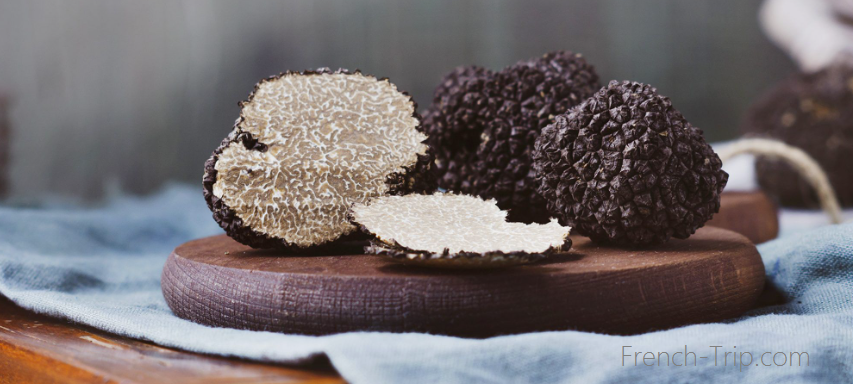
15. Marinated olives
Like in Spain and in France, local residents love pickled vegetables. You can find barrels with various olives, onions, and other somewhat mysterious vegetables in different marinades at the markets. A wonderful accompaniment to bread and wine! What’s most important – it’s very affordable: you can buy a small portion for just 1 – 1.5 euros!
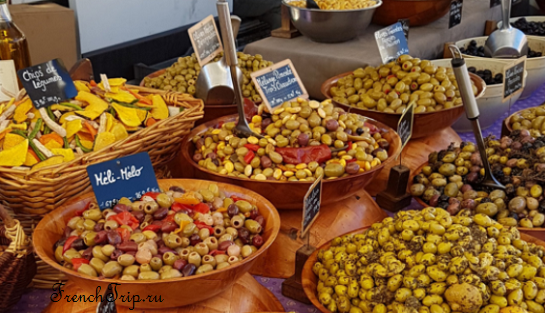
16. Provençal Clothing and Accessories
Flowy dresses, straw hats, espadrilles, and scarves inspired by Provençal fashion make stylish souvenirs.
17. Art and Crafts
Provençal artists and artisans create a wide range of art and crafts, including paintings, sculptures, jewelry, and handmade textiles.
18. Linen and Provençal Tableware
Linen products such as table runners, placemats, and tea towels adorned with Provençal motifs make for elegant souvenirs.
At the market, you can purchase beautiful table napkins (10 € for 4 pieces), tablecloths (the price depends on the size, but around 25 € for a tablecloth), elegant quilted bedspreads (75 €), and more. Traditional Provençal fabrics are mainly produced at the Charles-Demery factory in Tarascon (where you can visit the Provencal fabric museum).
19. Regional Books and Literature
Consider buying books, cookbooks, or novels set in Provence to delve deeper into the region’s culture and history.
20. Antiques and Vintage Finds
If you’re an antique enthusiast, Provence has several shops and markets offering vintage furniture, textiles, and collectibles.
21. Perfumes and Fragrances
Grasse, located in Provence, is known as the perfume capital of the world. Explore perfumeries and shops for fragrances and scented products.
Archives
Calendar
| M | T | W | T | F | S | S |
|---|---|---|---|---|---|---|
| 1 | 2 | 3 | 4 | |||
| 5 | 6 | 7 | 8 | 9 | 10 | 11 |
| 12 | 13 | 14 | 15 | 16 | 17 | 18 |
| 19 | 20 | 21 | 22 | 23 | 24 | 25 |
| 26 | 27 | 28 | 29 | 30 | 31 | |